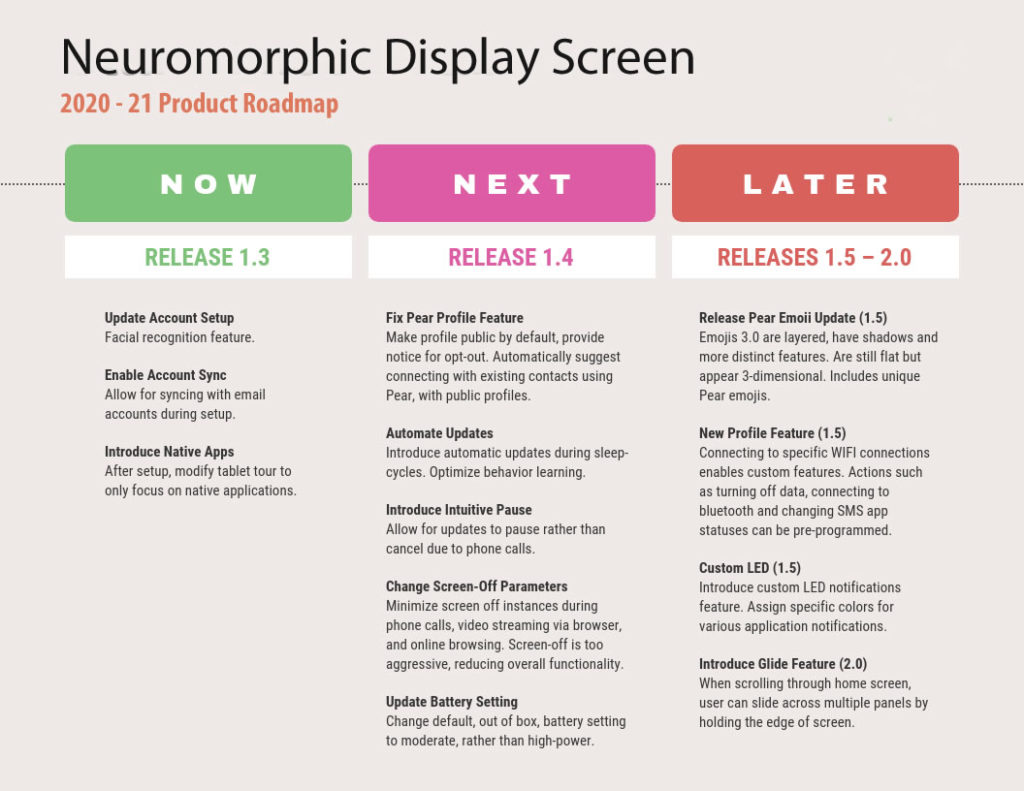Architecture of a great roadmap
What should a roadmap do?
A great roadmap delivers much more than a project plan. It’s a strategic communication tool that encapsulates the intent and direction of the product, steering the entire organisation toward delivering the company strategy and delivering the best possible value to the customer.
The roadmap should enable the organisation to see their efforts in a strategic context, providing a compelling vision of the future. It needs to frame the value delivered to the customer not just in terms of features, functionality and fixes with dates, but by setting out how each set of features fit into providing value to the customer and the organisation.
Outcomes are what matter, not output, and a roadmap needs to capture and communicate the outcomes that deliver value and help to align all stakeholders around common goals and priorities.
A world-beating roadmap should get customers excited about a product direction. It’s a two-way communication device, that not only confirms the mutual understanding of the direction of the product but gets the customer to be delighted about solving their particular pain points.
A product roadmap in our lean and agile world provides strategic context, focuses on value, embraces learning, brings together the whole team, and gets customers buy-in from the get-go.
The Anatomy of a Great Roadmap
Depending on which phase is the product is at i.e. discovery, design, prototype, release, growth, expansion, maintenance, end of life – the roadmap will have an emphasis on different aspects. Below are the main elements that need considering in developing a great roadmap.
Market Overview
Market need/market problem
Market analysis, Win/loss analysis
Competitive landscape analysis
Asset assessment – what do we have
Competencies – what we’re good at
Product Overview
Product vision – where it’s headed, what it looks like
Product mission – core purpose of why it exists
Product values – what it stands for
Business objectives
Product area and relevance to the organisation
Financial objectives and budget
Positioning and organisational strategy
Product Requirement (Features/Solutions)
Customers insights
Target customer
Customer needs and pain points
Customer Journey
User personas
User Stories
Use interviews, surveys, workshops, events, online communities
Acceptance criteria for features
KPIs and data gathering processes
Backlog
Tasks, Goals and Activities Milestones and targets
Objectively prioritised
Communicated clearly and with confidence,
Alignment, consensus, collaboration
Managing change, new feature requests
Go-to-market strategies
Marketing plan, launch plan
Customer acquisition strategies
Customer retention strategies
Sales pipeline
Sales process, lead generation, collaterals, sales tools, training channels
Support pipeline
Channel, demos, events, channel support
Risks
Internal, external, legislative, disclaimers
Presenting the roadmap
Before jumping into visualising the roadmap it’s important to know two things: who is the road map for, and how far into the future we’re showing. The content must be tailored to the audience and different audiences will have different needs.
For external stakeholders a higher-level strategic view is often prefered, planned over course of multiple quarters to years.

For internal product teams however, a much more granular view of the specific features and tasks are necessary. A good roadmap for internat teams will help to :
- Prioritize tasks and initiatives
- Track progress toward goals
- Coordinate activities across teams
- Build consensus and understanding within teams
Roadmaps can follow a Gant chart and swim lane approach.

Or they can follow a more kanban approach, including tracking individual task progress, those responsible and more.

There are many specialists platforms for roadmap planning and management. Some allow you to switch between different views and manage the level of detail shown so it’s relevant for the right audience.
Jira from Atlassian is the one I’ve used the most. Other tools also include Aha! , ProductPlan, Craft.io and Roadmunk, and others.
Summary
A great product roadmap steers the entire organisation toward delivering the right strategy and creating value for the customer as well as the company. By establishing the vision, mission and values important for the product and focusing on outcomes rather than features and dates, and by prioritising based on ROI and RICE methods through pulling together input from all stakeholders, we can drive alignment, plan and communicate ongoing change and make great products.

